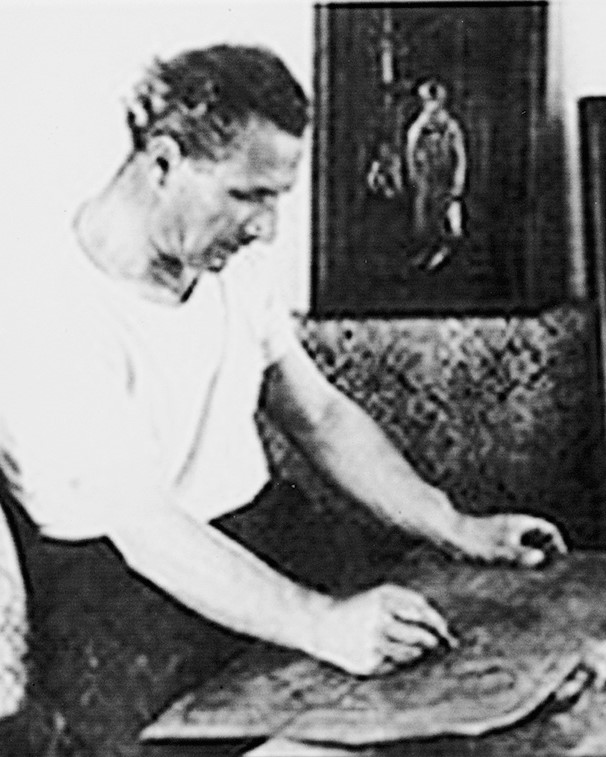Jacques LOUTCHANSKY
January 5, 2019Oscar MIESTCHANINOFF
January 5, 2019Arieh MERZER
WARSAW 1905 – SAFED (ISRAEL) 1966
Arieh Merzer was born into a Hassidic family. He was attracted to art from a very young age, but his family opposed it. He left his parents at the age of fifteen and learned the techniques of sculpting bas reliefs, a tradition that dates back to Biblical times. In 1927, he graduated from the Academy of Fine Arts in Warsaw and studied under the professor Adam Richtarsky.
Merzer exhibited his work for the first time in Warsaw in 1928 and arrived in Paris in 1930. He regularly exhibited his work at the Salon d’Automne and Salon des Tuileries. He specialized in hammered copper and represented the Jewish people’s history and spirit at the times of the Bible and the shtetl through his art. He also worked in silver and gold.
In 1943, following a trip to Saint-Gervais, he joined the Maquis and escaped to Switzerland. The Swiss authorities first made him work in a labor camp before allowing him to settle in Geneva. There, he earned his living by selling numerous sketches. His entire family died in concentration camps. He was the sole survivor and swore to commemorate the victims of the Holocaust through his art. In 1945, Merzer moved to Israel and settled in Safed, the renowned village of artists in Galilee. He exhibited his work in Jerusalem, Tel Aviv, and Haifa. He was awarded the Hermann-Struck prize in 1946 and the Dizengoff prize in 1951 and 1954.
Stories of Jewish Artists of the School of Paris 1905-1939
FRENCH-ENGLISH
Capitale des arts, le Paris des années 1905-1939 attire les artistes du monde entier. De cette période de foisonnement, un terme est resté, celui d'Ecole de Paris, qui recouvre une grande diversité d'expression artistique. Dans ce brassage dont Montparnasse est le creuset, un groupe se distingue : celui des artistes juifs venus de Russie, de Pologne et d'Europe centrale. Si leurs styles sont variés, un destin commun les rassemble : ils fuient l'antisémitisme de leur pays d'origine. Certains ont connu la célébrité dès les années 1920, tels Soutine, Lipchitz ou Chagall. D'autres n'ont pas eu le temps ou la chance d'y accéder. Près de la moitié a péri dans les camps de concentration nazis.
From 1905 to 1939, Paris attracted artists from all over the globe as the capital of the art world. This period of artistic proliferation became known as the School of Paris, and includes a great diversity of artistic expression. Within the teeming art world centred on Montparnasse, one group set itself apart: Jewish artists from Russia, Poland, and Central Europe. Although their styles were diverse, they shared the common fate of fleeing anti-Semitic persecutions in their home countries. Some became famous in the 1920s, such as Soutine, Lipchitz, and Chagall, while others did not have the time or the luck to gain renown. Nearly half of these artists died in Nazi concentration camps.





